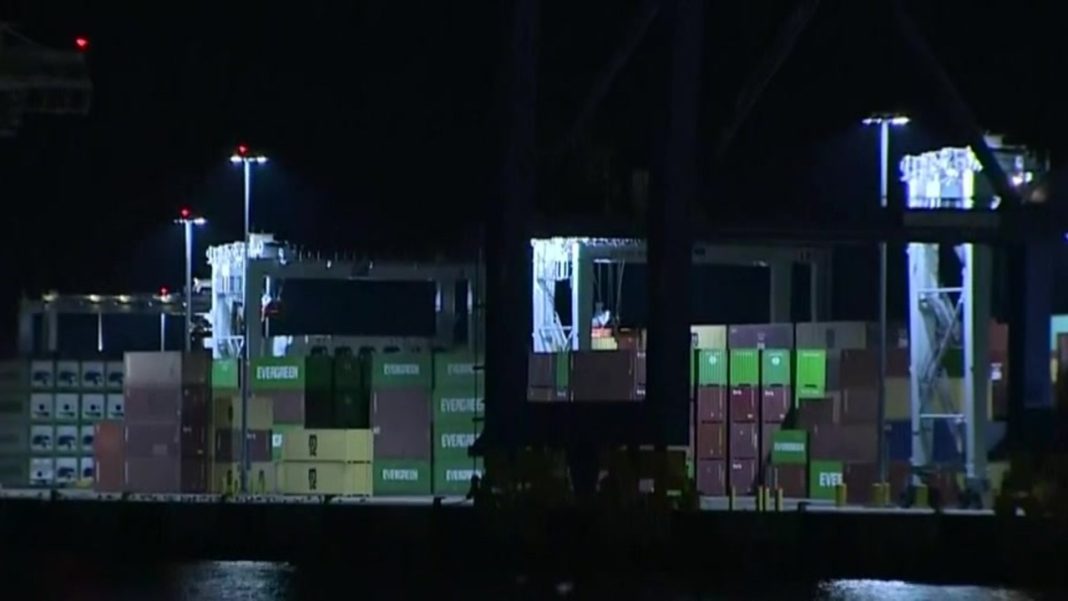As the clock ticks down to a critical strike deadline, the stakes couldn’t be higher for the 45,000 dockworkers represented by the International Longshoremen’s Association (ILA) and the U.S. Maritime Alliance, which oversees 36 ports stretching from Maine to Texas. A potential work stoppage looms ominously, threatening to disrupt the flow of goods through these vital trade routes, which handle nearly half of the nation’s shipping cargo.
Recent negotiations have sparked a glimmer of hope, as both parties have exchanged wage offers that suggest a willingness to find middle ground. The alliance has proposed a nearly 50% wage increase over the next six years, alongside tripling employer contributions to retirement plans and enhancing health care options. They have also indicated a desire to maintain existing language that limits automation, a critical issue for many dockworkers concerned about job security. However, the ILA has countered with demands for a staggering 77% pay raise over the same period, citing inflation and the financial pressures impacting their members.
Many ILA workers currently earn over $200,000 annually, but this figure is often inflated by extensive overtime, raising questions about the sustainability of their earnings. The union argues that without a substantial pay increase, workers will struggle to keep pace with rising living costs. This situation is compounded by the fact that formal negotiations between the two sides have stalled since June, heightening the risk of a strike.
The implications of such a strike are dire not just for dockworkers but for the entire U.S. economy. A prolonged work stoppage could lead to significant delays in the supply chain, ultimately resulting in higher prices for consumers. Retailers, facing supply shortages, would be forced to raise prices, impacting everything from toys and holiday decorations to essential goods like coffee and fruit. For instance, the ports at risk handle approximately 3.8 million metric tons of bananas per year, accounting for 75% of the nation’s supply. A strike could send ripple effects through the economy, delaying deliveries and inflating prices for everyday consumers.
Experts warn that the repercussions of a strike would extend well beyond the East Coast. Jay Dhokia, founder of the logistics firm Pro3PL, emphasized that the threat of disruption has already caused many shipments to be rerouted to West Coast ports, exacerbating congestion and increasing demand pressures. International markets, particularly in the United Kingdom, would also feel the strain, given that the U.S. remains its largest trading partner.
In addition to wage increases, the ILA is advocating for a complete ban on the automation of loading and unloading operations, a move aimed at preserving jobs in an industry increasingly threatened by technology. If the strike goes ahead, it would mark the first such action by the ILA since 1977, illustrating the gravity of the situation.
In light of these developments, the federal government is watching closely. President Joe Biden has the authority, under the 1947 Taft-Hartley Act, to intervene and seek a court order for an 80-day cooling-off period should the strike pose a significant threat to the economy. However, in a recent press conference, Biden indicated that he would not exercise this power, expressing confidence in the ongoing negotiations. His administration has been in regular contact with both the ILA and the alliance, urging a swift resolution that reflects the contributions of union workers while acknowledging the profitability of shipping companies in recent years.
As the deadline approaches, the hope is that both sides can come to a fair and equitable agreement that not only protects the livelihoods of the workers but also safeguards the broader economic interests of the nation. The outcome of these negotiations will undoubtedly have far-reaching implications for the supply chain, consumer prices, and the ongoing narrative of labor relations in the U.S.

